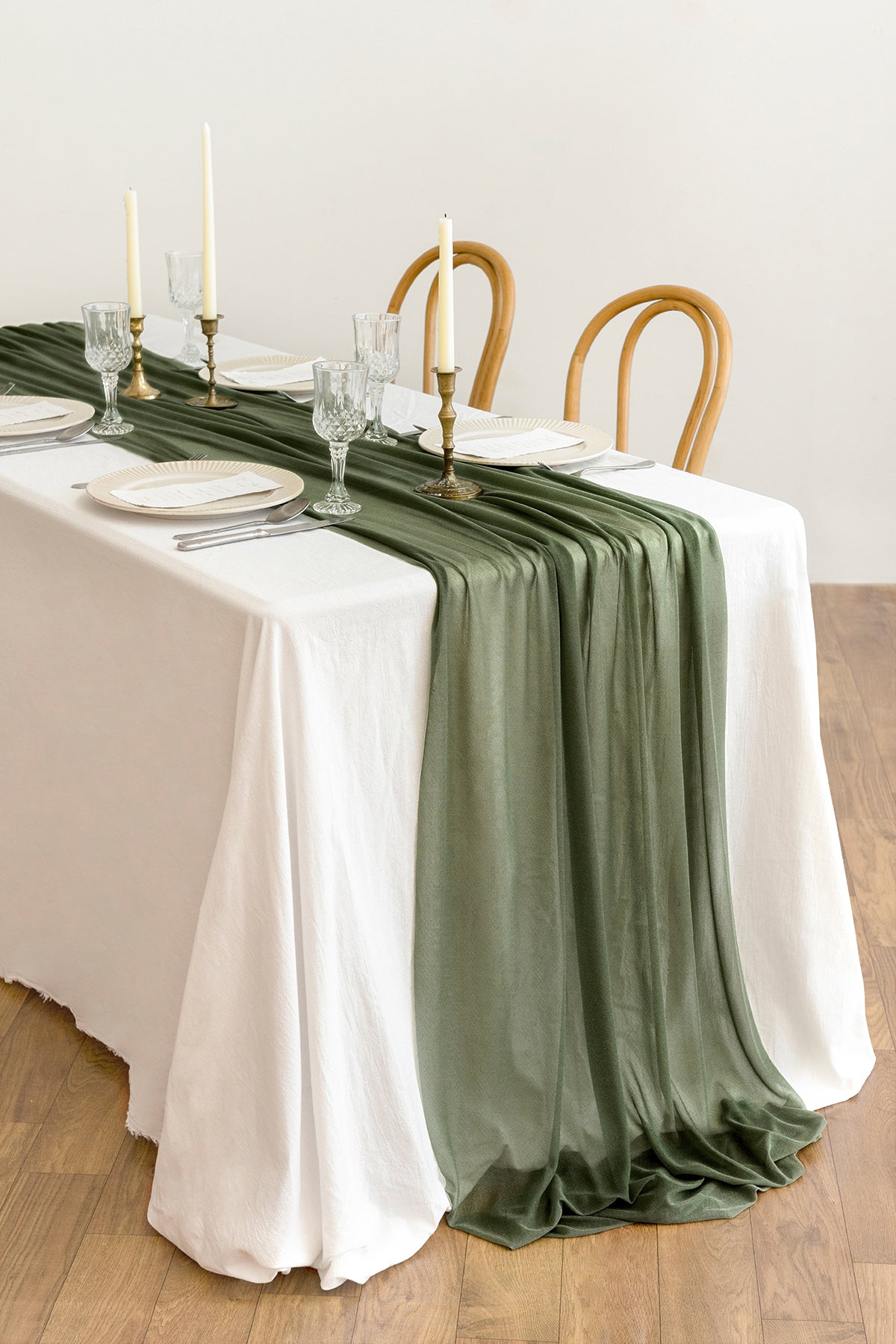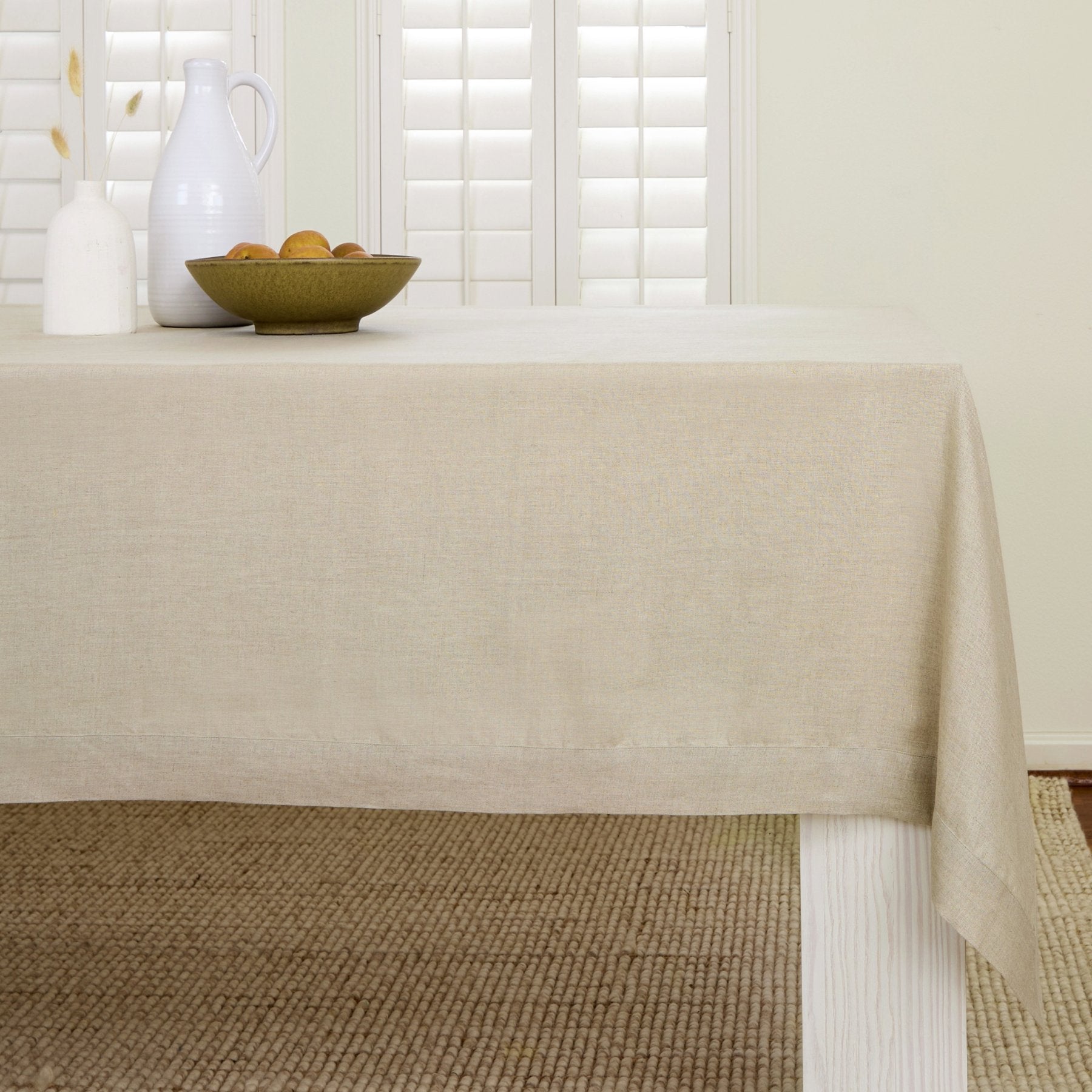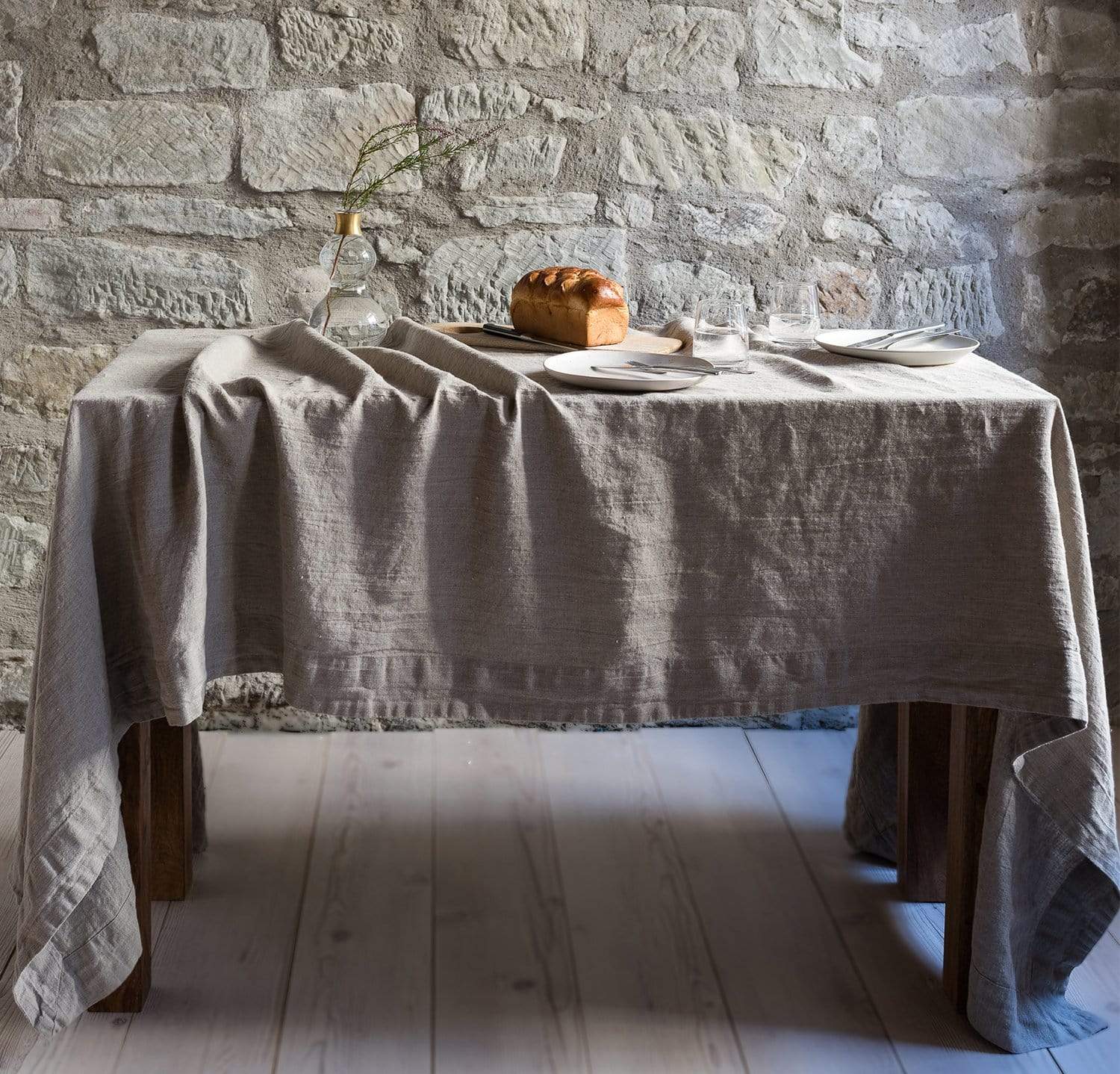Imaginative Table Runner Uses: Beyond the Table
Imaginative Table Runner Uses: Beyond the Table
Blog Article
Linen Material Innovations: Discovering Modern Trends and Creative Applications in Style and Fabric Industry
From sustainable manufacturing techniques to innovative weaving modern technologies, the advancement of bed linen is improving the landscape of the fabric sector. As we dive into the realms of innovative layout applications and the appearance of linen blends and hybrid materials, a brand-new phase unravels in which linen's duty in future textile developments takes facility stage.
Sustainable Practices in Bed Linen Manufacturing
Sustainable techniques in linen production have actually become increasingly essential in the textile sector's efforts to minimize ecological effect and promote ethical sourcing methods. Linen, a natural fiber stemmed from the flax plant, uses a series of advantages such as resilience, biodegradability, and breathability. Nevertheless, standard techniques of linen production can entail substantial water intake, chemical use, and energy-intensive procedures.
To attend to these difficulties, numerous textile producers are taking on lasting practices throughout the linen production procedure. This includes sourcing flax from natural farms that avoid hazardous chemicals and chemicals, executing water-efficient retting strategies to extract fibers from the flax stalks, and making use of environment-friendly dyes and surfaces. Furthermore, some business are purchasing renewable resource resources to power their manufacturing facilities and reducing waste via recycling and upcycling efforts.
Technological Advancements in Bed Linen Weaving
With the growing emphasis on sustainable practices in bed linen manufacturing, the textile sector is now observing a rise in technological developments especially targeted at revolutionizing the art of linen weaving. These advancements are improving the means bed linen textiles are generated, offering increased performance, top quality, and creative thinking in weaving techniques.
Among the vital technical innovations in bed linen weaving is the assimilation of digital looms. These innovative looms are outfitted with software that allows for complex and detailed layouts to be woven with accuracy. By digitizing the weaving procedure, manufacturers can achieve higher uniformity and precision in their bed linen materials.
Furthermore, improvements in thread spinning innovation have allowed the manufacturing of finer and even more sturdy linen threads - table cloths. This causes softer and smoother linen materials that retain their high quality also after several uses and washes
In addition, the growth of environment-friendly dyeing procedures and coatings for bed linen materials is obtaining grip. These sustainable practices not only reduce the environmental impact however likewise accommodate the enhancing consumer demand for ethically produced fabrics.
Creative Design Applications for Linen
Cutting-edge imaginative strategies are significantly shaping the imaginative style applications for bed linen in the textile industry. Linen's all-natural aesthetic appeal and ability to mix with other materials make it a favorite choice for creating distinct garments and accessories that provide to the environmentally mindful consumer.
In addition, developers are trying out bed linen in home design, using its breathable and sturdy nature to craft stylish furnishings such as curtains, bedding, and upholstery. The texture and drape of linen bring a sense of elegance and comfort to interior spaces, adding a touch of beauty to contemporary homes.

Linen Blends and Hybrid Fabrics

Hybrid fabrics, on the various other hand, take the idea of blending an action additionally by integrating additional components such as metal threads, recycled products, or conductive fibers. These cutting-edge fabrics not just expand the layout opportunities yet additionally present useful facets like conductivity, antimicrobial residential or commercial properties, or enhanced sturdiness. Crossbreed materials are increasingly being used in various markets, including style, indoor style, and technical fabrics, where the need for multifunctional products is on the rise.
Bed linen's Function in Future Textile Innovations

In the world of future textile developments, bed linen is expected to be a principal in the advancement of advanced functional textiles. Developers and researchers are checking out methods to boost bed linen's integral qualities through technical advancements, such as incorporating wise textiles, nanotechnology, and performance surfaces. These developments aim to raise linen's performance qualities, making it appropriate for a wider variety of applications, from activewear to protective clothes.
Furthermore, the combination of linen with other natural or artificial fibers opens limitless opportunities for producing novel textiles with unique homes and performances. By leveraging linen's characteristics and exploring innovative blends, the fabric sector is positioned to introduce exciting developments that provide to advancing customer requirements and sustainability demands.
Conclusion
In conclusion, the expedition of lasting techniques, technical improvements, innovative additional resources style applications, linen blends, and its role in future fabric developments highlight the continuous evolution of linen fabric in the modern layout and textile sector. With a focus on development and creativity, the versatility and eco-friendly nature of bed linen make it a useful product for designers and manufacturers alike, paving the way for more advancements and developments in the area of textiles.
As we try this site dive right into the realms of imaginative style applications and the emergence of bed linen blends and hybrid textiles, a new phase unfolds in which bed linen's function in future fabric developments takes center stage.
Exploring the combination of linen with various other materials has led to the introduction of innovative blends and hybrid fabrics in the modern textile market. Bed linen blends offer an one-of-a-kind combination of the qualities of bed linen with those of various other fibers, resulting in fabrics that possess boosted homes such as boosted resilience, enhanced draping, and lowered wrinkling.The evolution of linen blends and crossbreed textiles has actually established the stage for Linen to play an essential function in driving future fabric innovations.In the realm of future textile advancements, bed linen is anticipated to be a key player in the advancement of advanced functional materials.
Report this page